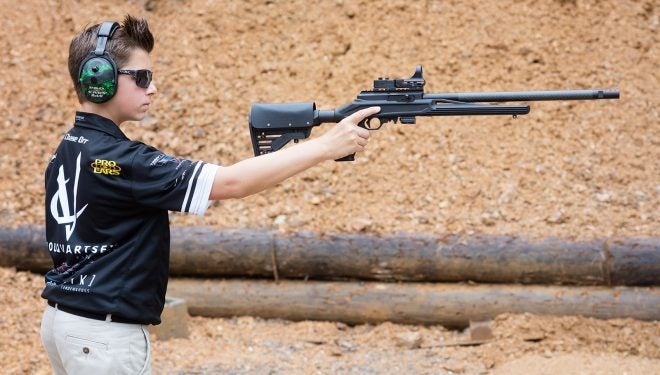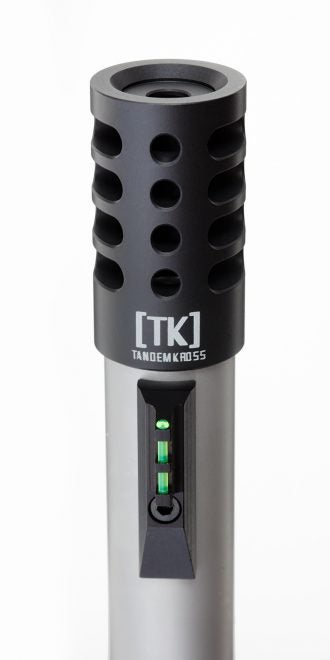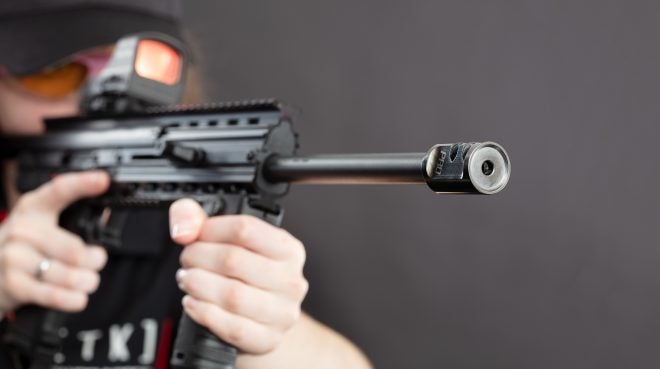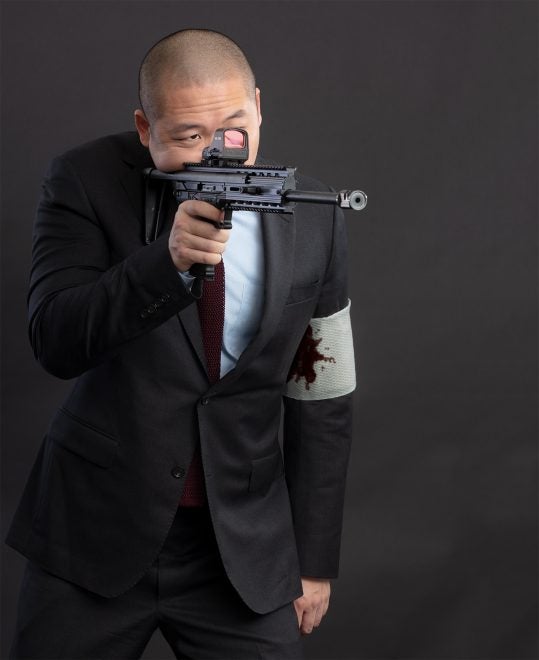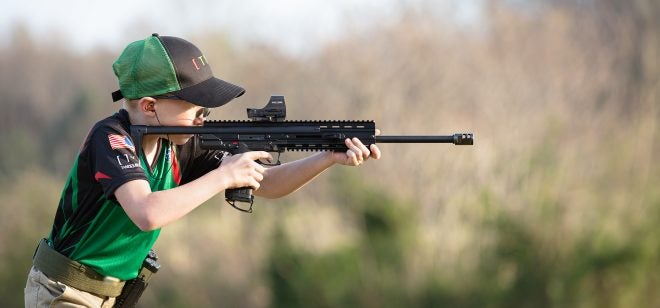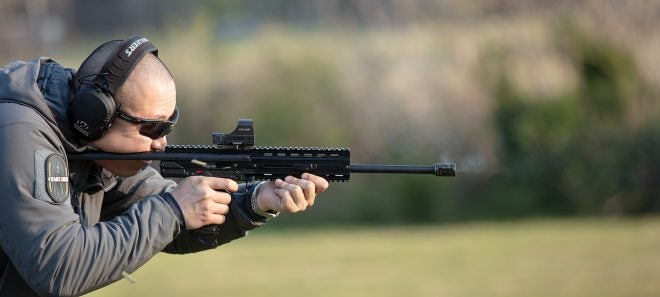Tandemkross Gamechanger Pro Comp
Oleg Volk 07.21.18
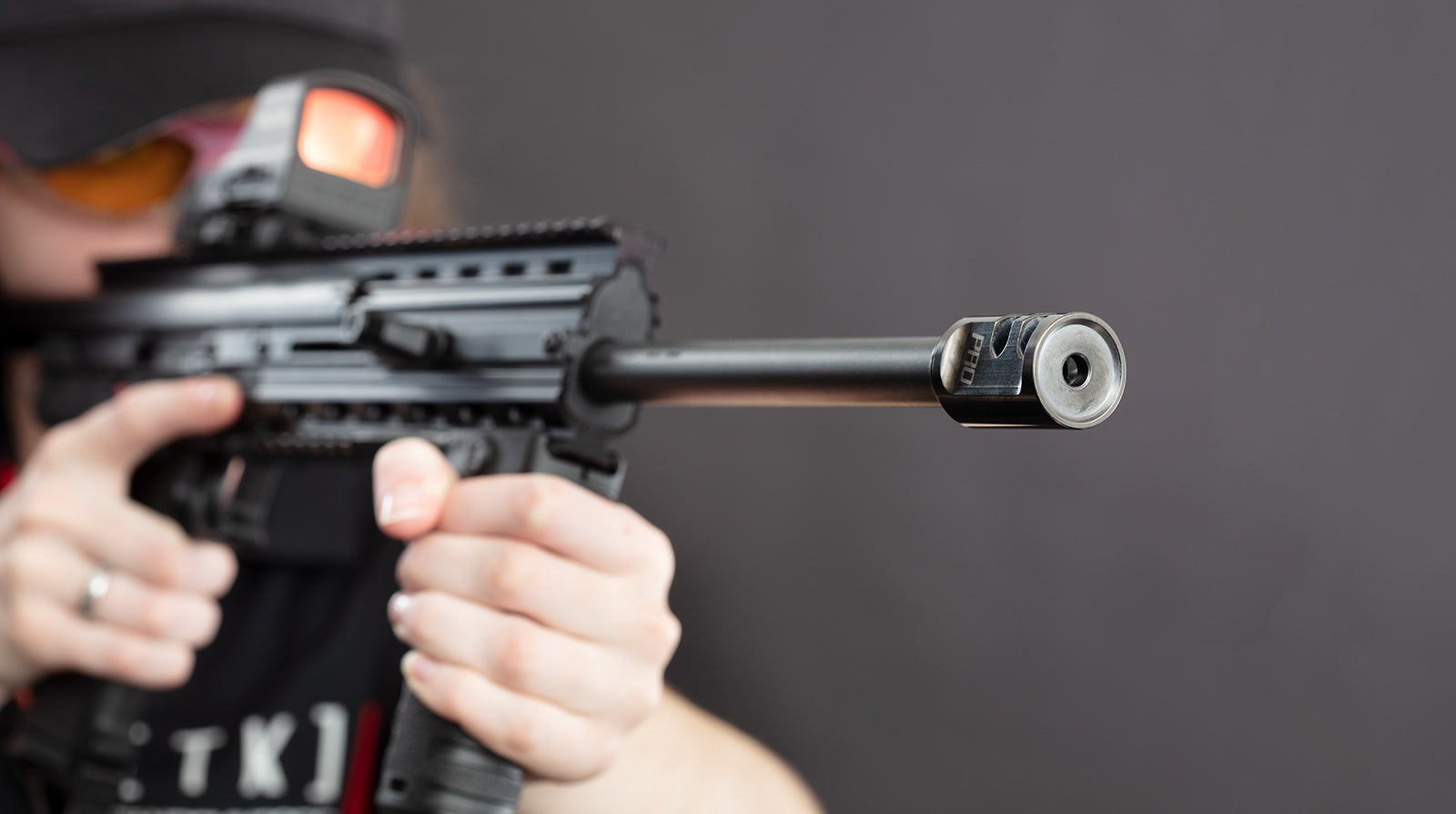
Rimfire guns aren’t usually associated with either recoil or muzzle flip. That’s true up to a point. Competition 22s are often made with ultralight materials, this Volquartsen carbine being a good example.
The point of such guns isn’t weight reduction per se but lessening of the inertia. Even a junior shooter can point this carbine rapidly at multiple targets. The down side to the carbon fiber wrapped barrels is that they rise ever so slightly on firing, and rise faster when the rate of fire is rapid.
This becomes very pronounced when working with select fire examples, such as FN P90 (not rimfire but of similar power as 22WMR), HK MP7 (likewise) and automatic version of Keltec CMR30. Absent a muzzle compensator or a sound suppressor, these weapons rise very quickly. With CMR30 and other Uzi-like designs with short forends, the rise becomes hard to control. Even a select fire 10-22 without a suppressor or a comp starts moving off target after just 2-3 shots fired at cyclic rate. For semi-auto sports shooters, hitting cyclic rate is unlikely, but hitting 5 shots per second is common, and that’s enough to make muzzle rise a factor.
Tandemkross has long produced an aluminum 22LR compensator that works on pistols and rifles. It shows up on a significant portion of guns at every rimfire competition. However, for 22WMR and similar centerfire cartridges (22 Hornet, 22TCM), their new ProComp design is better, as it channels the increased volume of gas away from the sight plane. A little more than twice as heavy at 2.8oz, this stainless device is also more resistant to flame cutting over time.
Now, unlike 22LR, 22WMR is an uncommon round in shooting sports. In hunting use, the compensator helps only with higher magnification sights at longer ranges, reducing muzzle rise to permit observation of the impact through the scope. In my opinion, the ProComp niche is with 22LR pistols specifically (as shorter barrels rise more and produce higher pressure at the muzzle for the comp to redirect) and also with 22WMR, 5.7×28 and similar small cartridges used in defensive role.
Not being an accomplished speedshooter, I compared bare muzzle CMR30 with a compensated variant. At 15 yards, my most rapid shooting produced a six-inch pattern around the “torso” of the target. WIth the compensator, that pattern shrunk to about two inches. To my pleased surprise, even at the fairly dark indoor range, the comp produced no visible muzzle flash and no noticeable increase in concussion.
In working with junior shooters, we found that the less disturbed sight picture speeded up target-to-target transitions.
With adult marksmen, the photos illustrate that the barrel stays horizontal even with multiple empties in the air. With low power cartridges intended for burst application, guns like CMR30 and PS90 would likely be fired rapidly if employed for protection, so staying in control of the lead stream is a good idea.
I am not a fan of compensators in general, and very few of my guns have them. But this particular design and excellent execution — including a high-lubricity finish that resists lead and powder adhesion — has won me over. It works as advertised, and doesn’t channel noise back to the shooter.

